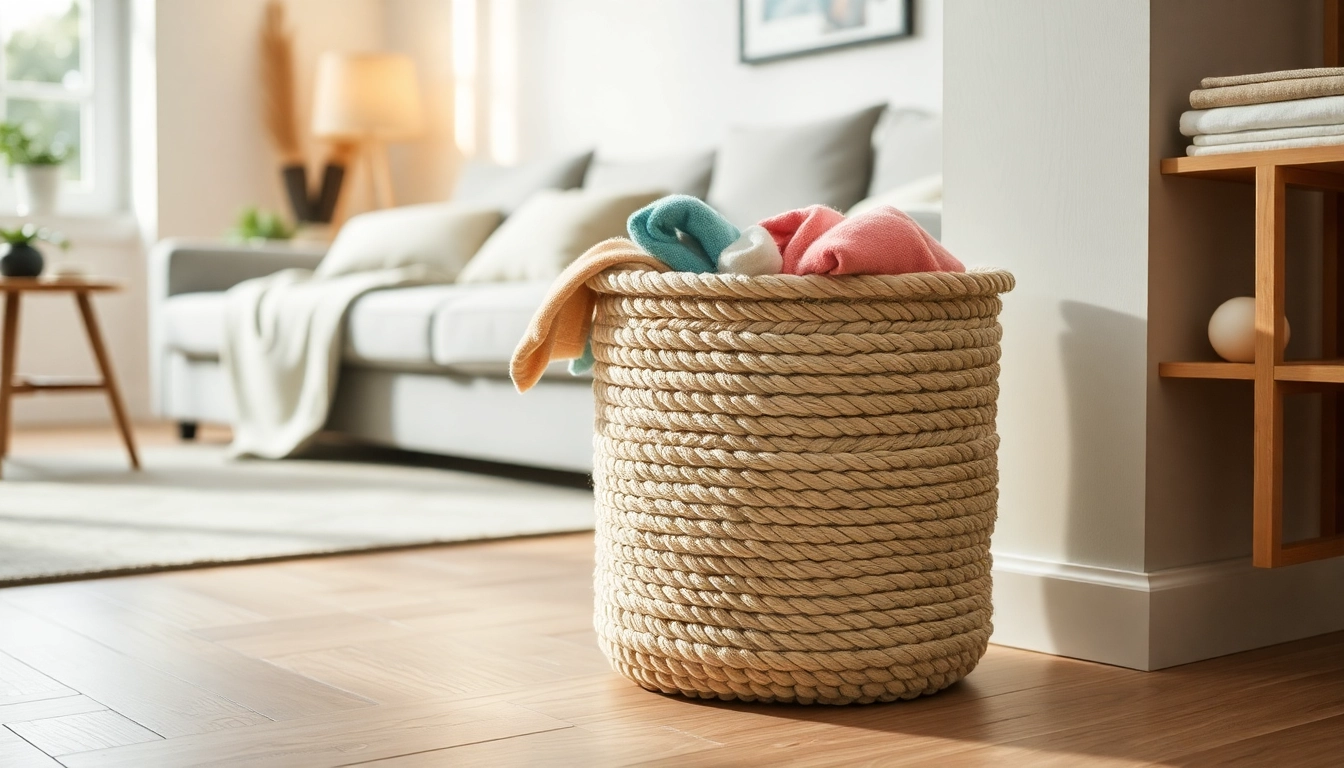Understanding Vertikale Gärten
What are Vertikale Gärten?
Vertikale Gärten, often referred to as vertical gardens or green walls, are innovative gardening solutions that utilize vertical space to grow plants, herbs, and vegetables. These systems range from simple DIY setups using pallets and containers to sophisticated, electronically controlled installations that can be part of larger architectural designs. The concept allows for a sustainable approach to urban gardening, making it easier to incorporate greenery into both residential and commercial spaces, even where traditional gardening might not be feasible. For those looking to explore the many possibilities of vertikale Gärten, there is significant room for creativity and personal expression.
Benefits of Vertical Gardening
The benefits of vertikale Gärten extend far beyond aesthetic appeal. Here are some of the most notable advantages:
- Space Efficiency: Vertical gardens maximize limited space, making them ideal for apartments, small backyards, and urban environments.
- Environmental Impact: They can substantially improve air quality by filtering pollutants and producing oxygen.
- Thermal Regulation: These gardens can help regulate indoor temperatures by providing insulation, reducing heating and cooling costs.
- Enhanced Biodiversity: Vertical gardens can attract various species of birds, insects, and other wildlife to urban areas.
- Improving Mental Health: Access to green spaces has been shown to reduce stress and improve overall well-being.
Common Mistakes in Vertikale Gärten Setup
While setting up a vertical garden can seem straightforward, several common pitfalls can impede your success:
- Improper Plant Selection: Choosing plants that don’t thrive in vertical setups can lead to poor growth or failure. It’s essential to consider the plants’ specific needs regarding sunlight, water, and support.
- Ignoring Watering Needs: Vertical gardens can dry out faster than traditional gardens. Overlooking a consistent watering schedule can lead to plant stress or death.
- Neglecting Drainage: Ensuring adequate drainage is crucial in preventing root rot. Failure to design your system with proper drainage can lead to long-term issues.
- Inadequate Support Structures: Using flimsy materials or incorrect installation techniques can cause your garden to collapse. Choosing suitable frames and hardware is critical.
Choosing the Right Plants for Your Vertical Garden
Best Plant Varieties for Vertikale Gärten
When selecting plants for your vertikale Gärten, consider not only aesthetics but also functionality and climate. Here are some ideal candidates:
- Herbs: Plants like basil, thyme, and mint are great for vertical gardens as they do not require extensive root systems.
- Succulents: These plants are ideal due to their low water needs, making them perfect for vertical setups.
- Small Vegetables: Cherry tomatoes, strawberries, and peppers can thrive in vertical systems with proper support.
- Flowering Plants: Varieties like petunias, pansies, and geraniums can add vibrant color and sensory appeal.
Pest and Disease Management
Even in a vertical garden, pest management remains critical. Here are practical tips for maintaining a healthy garden:
- Regular Inspections: Frequent checks can help catch pest issues early before they proliferate.
- Natural Predators: Introducing beneficial insects like ladybugs can reduce pest populations naturally.
- Organic Treatments: Use organic pesticides or insecticidal soap to combat infestations without harming the environment.
- Cultural Practices: Good cultivation practices, such as proper spacing and watering, can reduce stress and prevent disease.
Seasonal Planting Strategies
Selecting plants according to their seasonal needs is vital for any successful vertical garden:
Early spring is an excellent time for leafy greens such as lettuce and spinach, while summer plants like tomatoes and cucumbers yield during the hotter months. Autumn allows for planting of herbs like chives and winter can support hardy plants like pansies and some types of kale. Rotating plants not only enhances growth but ensures you can enjoy fresh produce year-round.
Design Ideas for Vertikaler Garten
Integrating Vertikale Gärten into Small Spaces
In urban areas where space is at a premium, vertical gardens offer a solution. Here are some design ideas:
- Pallet Gardens: Using wooden pallets as planting containers is an inexpensive way to create a vertical garden. They can be secured against a wall or fence.
- Hanging Planters: Utilizing hanging pots or containers allows for a dynamic and visually appealing design that utilizes vertical space effectively.
- Wall-mounted Systems: There are various commercially available vertical garden systems specifically designed for space-saving; look for integrated water and drainage systems.
Using Trellises and Frames Effectively
Trellis systems can be pivotal in successfully growing climbing plants in vertical gardens:
Ensure your trellis is adequately anchored to withstand plant weight as they grow. Plants such as cucumbers and peas can beautifully transform a simple frame into a lush growing structure. Consider alternating plants for visual interest and making the most of available vertical space.
Combining Aesthetic and Functional Plants
A well-designed vertical garden serves aesthetic purposes while also being functional. By strategically placing both decorative and edible plants, you can create a visually appealing space that also yields produce. Mix colorful blooms with soft herbs and leafy greens to attract pollinators while offering visual contrast.
Installation Guidelines for a Successful Vertical Garden
Step-by-Step Guide to Setting Up Your Vertikale Gärten
Begin your vertical gardening journey with these steps:
- Choose Your Location: Select a vertical surface that receives adequate light (sunlight or indirect light depending on the chosen plants).
- Design Your Layout: Plan where each plant type will go, considering eventual growth.
- Install Support Structures: Ensure that your wall mounts or frames are secure; measure twice and make sure they can bear the weight of mature plants.
- Prepare Your Planting Medium: Use a lightweight, well-draining soil mix suitable for vertical gardening.
- Add Plants: Position your plants according to your design, ensuring they will thrive in their new homes.
- Water and Maintain: Establish a watering routine and integrate maintenance tasks into your regular gardening schedule.
DIY vs Professional Installations
While some homeowners may opt for a DIY approach, hiring professionals may be beneficial for larger or more complex systems. Professionals may provide design insights, install irrigation systems, and ensure the longevity of your vertical garden. However, for those comfortable with basic gardening skills, a DIY vertical garden can be a satisfying project that can also be adjusted over time.
Maintenance Tips for Longevity
To ensure the longevity and health of your vertical garden, consider these maintenance practices:
- Routine Watering: Vertical gardens often need more frequent watering due to drainage and evaporation rates.
- Fertilize Regularly: Use a balanced fertilizer suitable for the types of plants in your vertical garden to promote growth.
- Prune and Trim: Regularly prune overgrown plants to prevent overcrowding and to promote air circulation.
- Inspect Regularly: Regularly check for pests and diseases to maintain a healthy growing environment.
Innovative Trends in Vertical Gardening
Technological Advances in Vertikale Gärten
With advancements in technology, vertical gardening has evolved significantly. Innovations include:
- Smart Irrigation Systems: These systems adjust watering schedules based on weather conditions and moisture levels in the soil.
- Vertical Hydroponic Systems: Using nutrient-rich water for growing plants without traditional soil can yield faster growth rates.
- Automated Lighting: Timed LED grow lights can supplement natural light for optimal growth in challenging indoor environments.
Eco-Friendly Practices in Vertical Gardening
Eco-conscious gardening practices gain traction as more people become interested in sustainability:
Using organic materials, rainwater harvesting systems, and composting techniques can enhance the sustainability of vertical gardens.
Urban Development and Vertikale Gärten
Urban areas are increasingly recognizing the importance of vertical gardens as a means of combating pollution and enhancing urban aesthetics. City planners are incorporating more green spaces in their designs, often supported by vertical gardens. These initiatives improve urban livability and contribute to a broader green movement aimed at transforming city landscapes.


